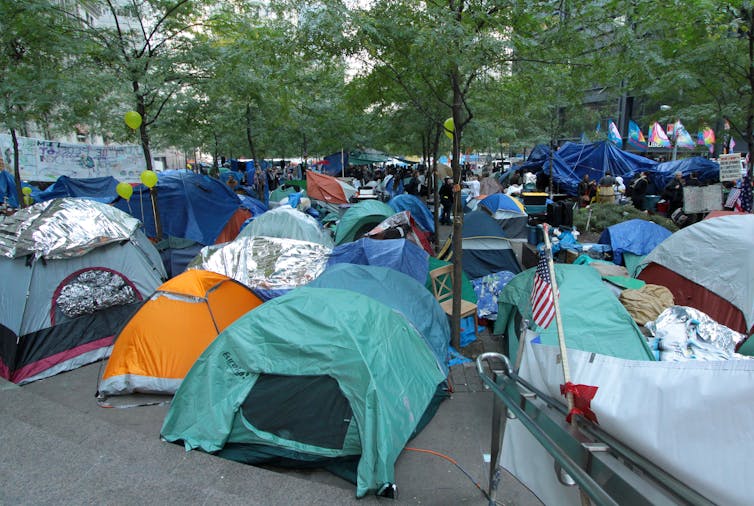A new chapter has been written regarding how protest encampments come to an end. The Ontario Superior Court of Justice granted an injunction to the University of Toronto on July 2, which provides a justification for police action. University officials gave protesters until 6 p.m. on Wednesday, July 3 to leave the site, and the encampment was dismantled before the deadline without any violence.
Protesters have been demanding that the university act in a way that supports a pro-Palestinian agenda with respect to the ongoing Israel-Hamas war. The demands include disclosing all investments, cutting ties with Israeli institutions and divesting from partnerships that “profit from the Palestinian suffering and deaths.”
As this latest chapter in the loud, symbolic public protest comes to an end at the University of Toronto, the bigger context is the emerging social phenomenon of protest camps.
Are protest camps legitimate venues for expression, or are they harmful to public order? By considering the larger issue of symbolic use of space and how these situations have ended, we can better consider public safety aspects of the current controversy.

Protest encampments
Central to what happened at the University of Toronto, as well as other university campuses across Canada, was the issue of control of a specific space. A space was chosen to be occupied and used to draw attention to an issue that protesters deemed was otherwise difficult to receive attention for.
Protest camps are focal points for a movement, both organizationally and symbolically.
The taking over of a space to support a movement is not novel. In 2011, Occupy Wall Street took over Zuccotti Park in New York City. The privately owned public space turned out to be an effective location for setting up a protest encampment that attempted to highlight economic inequality, right in the city’s financial district itself.

In the case of the Zuccotti Park encampment, the physical occupation lasted about 60 days before it was cleared. However, the rhetorical force of Occupy Wall Street depended on the persistent presence of a committed core of demonstrators, who worked to extend the impact of their message.
For whatever messages the encampment at the University of Toronto wants to express, the physical site of occupation has a finite lifespan. But a core group of protesters will try to extend the teachable moment of their presence as long as possible.
Ottawa occupied by the Freedom Convoy
In another example of a protest camp and its eviction, authorities took actions to end the so-called Freedom Convoy’s occupation of Ottawa in 2022.
Read more: The occupation of Ottawa by the 'freedom convoy' has the potential for an urban siege
There were orderly phases to the police action to evict Freedom Convoy activists. The first phase was stabilization, where reinforcements from other police forces were brought while a clear message was given to the protesters to disperse. Next, a slow and methodical line of officers swept in to clear an area, secure it and move on the next area.
An important part of the police action was that an escape route was left for protesters to depart voluntarily at the last minute. For those who did not leave, arrests were made to remove the dedicated core of intransigent protesters. In this phase, reasonable force was applied if the occupiers resisted. The cleared areas were then maintained so new agitators did not move in to refill the cleared encampment. After intransigent occupiers are lawfully removed, it is important to maintain the site for a period of time to prevent it from being reoccupied.
The use of injunctions
The injunction to clear the University of Toronto protest is one part of a legal process that can lead to action resulting in an encampment coming to an end within the boundaries of the law. Any police action would be controversial, as inflammatory rhetoric would surround enforcement actions, but fear of controversy should not restrict necessary public safety actions.
At present, the Israel-Hamas war continues as the fate of 116 Israeli hostages remains unknown. Israel continues to cope with the deep impacts of the deadly Oct. 7 attacks, while Palestinians also cope with their own over 37,900 war-related casualties. A peaceful solution to the ongoing conflict remains elusive.
With emotions running high, it is hoped that cooler heads will prevail. Protesters removed all tents by the University of Toronto’s deadline, and dismantled the encampment. However, the larger struggles remain unaffected. This chapter of ending the occupation in Toronto will not act to materially stop the suffering in Israel and Palestine at this moment.
Jack L. Rozdilsky receives support for research communication and public scholarship from York University. He also has received research support from the Canadian Institutes of Health Research.
This article was originally published on The Conversation. Read the original article.







